www.haemophilia.org.au
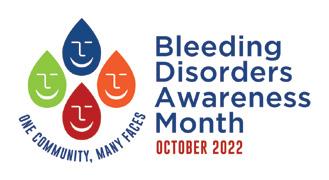
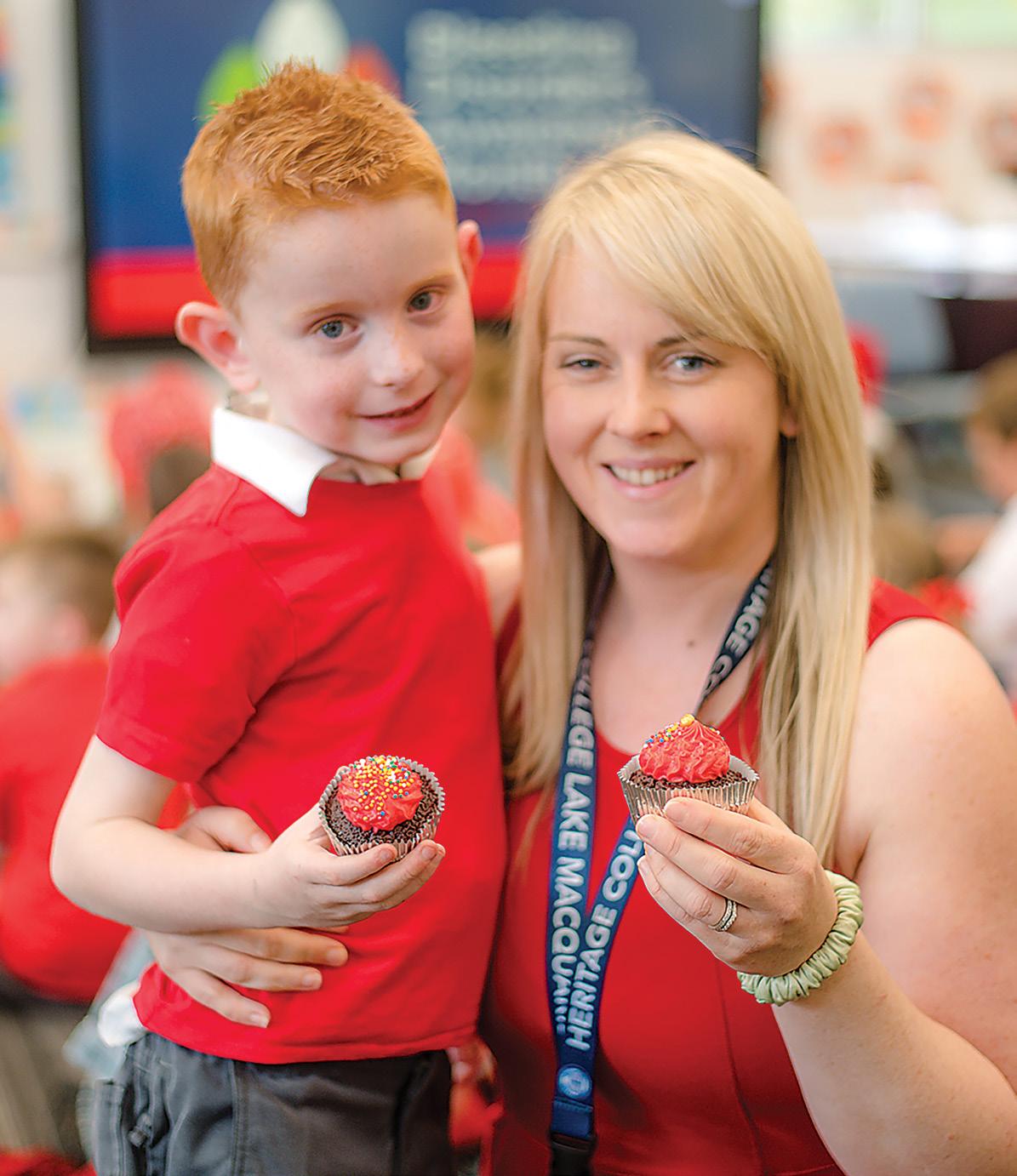
Bleeding Disorders Awareness Month It’s a wrap! New haemophilia therapies Hear the latest from the experts Starting primary or high school Tips for parents HAEMOPHILIA F O UND ATION AUSTRALIA Number 220 DECEMBER 2022


2 Haemophilia Foundation Australia Registered No.: A0012245M ABN: 89 443 537 189 Street address: 7 Dene Avenue Malvern East, Victoria, Australia 3145 Postal address: PO Box 1208, Darling, Victoria, Australia 3145 Tel: +61 3 9885 7800 Freecall: 1800 807 173 Fax: +61 3 9885 1800 hfaust@haemophilia.org.au www.haemophilia.org.au Editor: Suzanne O’Callaghan Read National Haemophilia online https://www.haemophilia.org.au/ nationalhaemophilia: HAEMOPHILIA F O UND ATION AUSTRALIA 3 From the President 4 Bleeding Disorders Awareness Month 2022 8 Poppa Erl and Roman share a special bond 11 VWD down through the generations 12 What is VWD? CONTENTS 14 New haemophilia therapies 17 World AIDS Day 18 AHCDO update 19 Starting school with a bleeding disorder 22 Youth News: Willem’s story National Haemophilia 220, Dec ember 2022 The HFA Council and Staff wish you a happy and safe festive season. Thank you for your support during 2022 and we look forward to working with you again in 2023. The HFA office will be closed from noon on Friday 23 December 2022 and reopen on Monday 9 January 2023. During that time if you have any queries or need to contact HFA, please phone (03) 98857800 or email hfaust@haemophilia.org.au as messages will be monitored and we will respond as soon as possible. Sea son’s Greetings
Gavin Finkelstein President, Haemophilia Foundation Australia

NEW THERAPIES
It is exciting to see more new therapies for bleeding disorders coming to the global market. Several of these are for haemophilia, and we look forward to novel therapies for other bleeding disorders as well. Gene therapy is also very close; in fact a gene therapy product for haemophilia B was recently approved by US regulatory authorities. Like many of my peers and our parents and relatives, I have been hearing about some of the possibilities over the years and it is great to see them becoming a reality.
You can find out more about the new haemophilia therapies in this issue of National Haemophilia or watch the webinar on our website. I would like to thank Dr Liane Khoo, Dr Sally Campbell and haemophilia nurse Stephen Matthews for putting together a topical session explaining how the new therapies work and what they mean for a person with haemophilia.
The progress of these new therapies towards being approved for use in Australia has followed clinical trials, some of which would have included Australian participants. Clinical trials are of course, a very important time in the development of a new drug or therapy, and we are always grateful for the work that goes into them, including for those who join the trials not entirely sure what the outcome might mean for themselves.
It is always important to remember that a treatment proposed in a clinical trial may not reach the market because it is not considered safe or effective by regulatory authorities or it may not be considered commercially viable. There are many hurdles to be overcome before we see some of the new treatments in the community. Nevertheless, HFA is very keen to encourage the pharmaceutical company sponsors of these new treatment products that have successfully tracked through the clinical trial phases to go ahead with seeking registration and assessment for funding
From the President
so they can be made available to our community as soon as possible, if appropriate. We have commenced a program of education and advocacy with government as we want members of parliament to understand the importance of these new treatments to our community and funds to be made available for them to be accessible to those who need them for their treatment. Our policy is that treatment choice must always be a decision between the person requiring treatment (or parents in the case of children) and their treating clinician. There can be many reasons why a specific treatment may or may not be suitable for individuals and we are now in an era where it is important to have a strong relationship with your Haemophilia Treatment Centre so that you can explore the opportunities.
STARTING SCHOOL
With the new year about to start, some of you will be looking at starting your child at a new primary or secondary school. There is always a lot to think about, not least of all, how to manage your child and their bleeding disorder and what to tell the teachers. So much has changed in recent years and it will be important to educate the school. Our Haemophilia Treatment Centres do a great job of helping to support families and inform schools. I recommend you have a look at Janine Furmedge and Jaime Chase’s excellent article in this issue for some very helpful advice and tips.
CONFERENCE
I am very pleased to announce that we are now planning the next Australian Conference on Haemophilia, VWD and Rare Bleeding Disorders for 24-26 August 2023 in Melbourne. This will be an in-person event and a great opportunity for us to come together as a community to hear the very latest information and discuss where we are going with treatments, comprehensive care and living well generally. Save the date in your calendar!
3
National Haemophilia 220, Dec ember 2022
For the first time, Bleeding Disorders Awareness was hosted over a month – and what a great month it was.

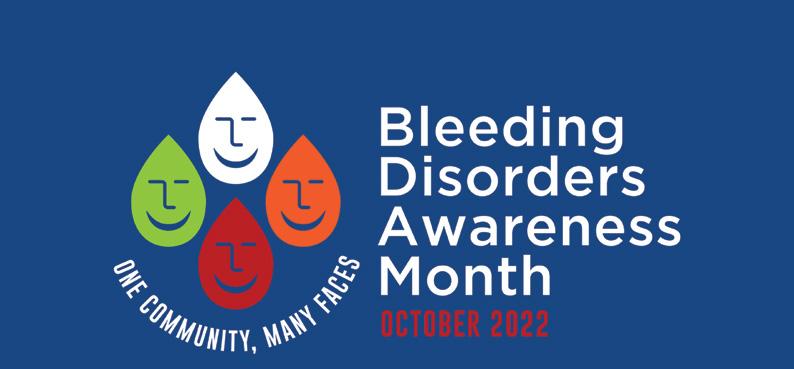
Bleeding Disorders Awareness Month is an opportunity for individuals and families as well as Haemophilia Foundations and other organisations to take part in a campaign and activities to raise awareness about haemophilia, von Willebrand disease and related inherited bleeding disorders around Australia.
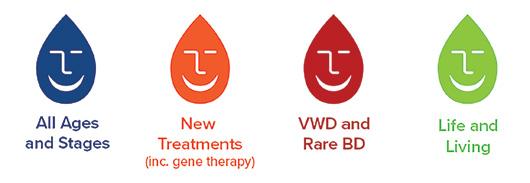
PERSONAL STORIES
The theme of the month was One community, many faces. We showcased different topics for all ages and stages during the month.
Thank you to the individuals and families who shared their stories during the month. You can read some of their stories in this issue of National Haemophilia.


WEBINARS
Over the month HFA hosted 4 webinars, covering very topical areas. The webinars can be viewed at https://tinyurl.com/BDAM22-webinars
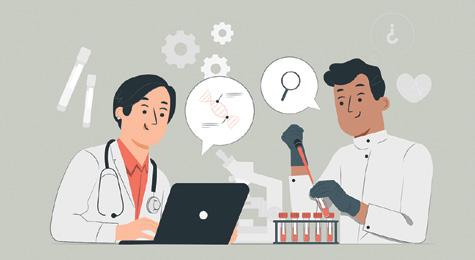
4 National Haemophilia 220, Dec ember 2022
Travel Tips New therapies Choosing or changing your career path Your rights: Superannuation and insurance
RED CAKE DAY
Across the country our community hosted Red Cake Days, information stalls, children with a bleeding disorder did show-and-tell to their classmates and Bendigo Bank Gippsland region in Victoria fundraised across their branches.
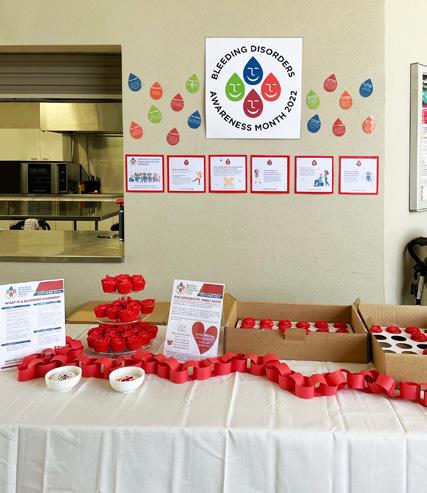
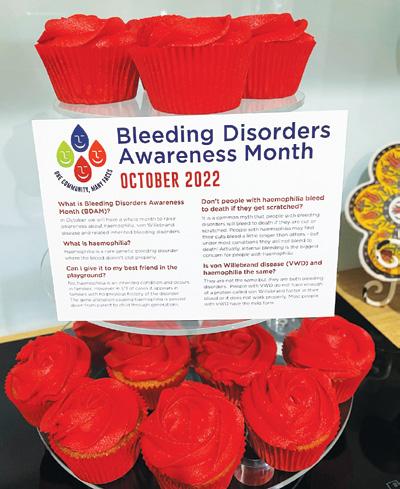
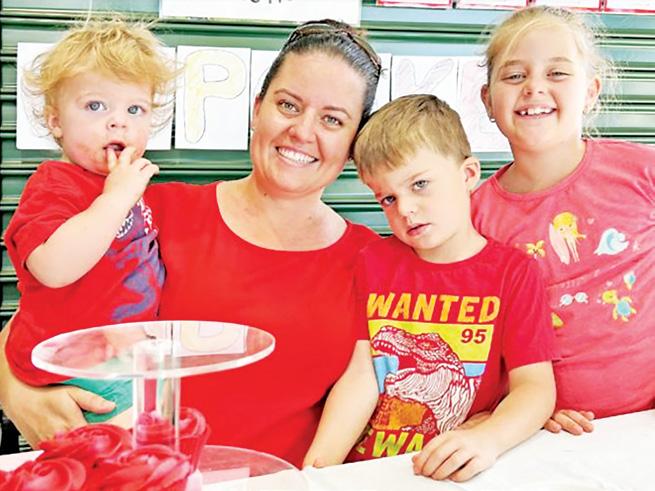
1 2 3 4
1,2,3: Alex in her small town of Weipa QLD held seven cupcake days, selling 517 cupcakes in total and raising over $1000. Thank you to St Joseph’s Parish School Weipa, C&K Weipa Community Kindergarten, Weipa Town Authority, Weipa Business Equipment and Woolworths Weipa for your assistance.
4: Lincoln educated his peers in kindergarten at Heritage College Lake Macquarie about bleeding disorders and haemophilia B.
Thank you to everyone who participated in Bleeding Disorders Awareness Month.

5 National Haemophilia 220, Dec ember 2022
BLEEDING DISORDERS AWARENESS
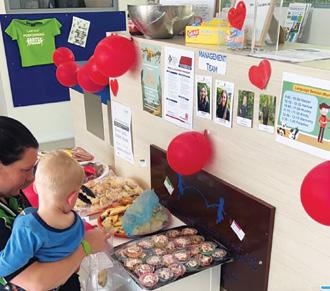


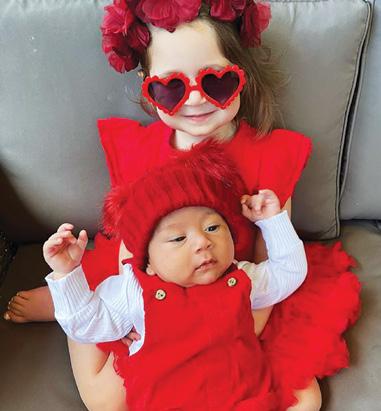
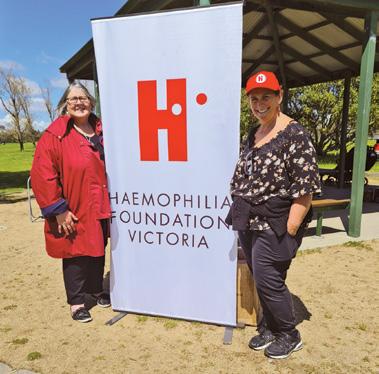
MONTH IN PICTURES
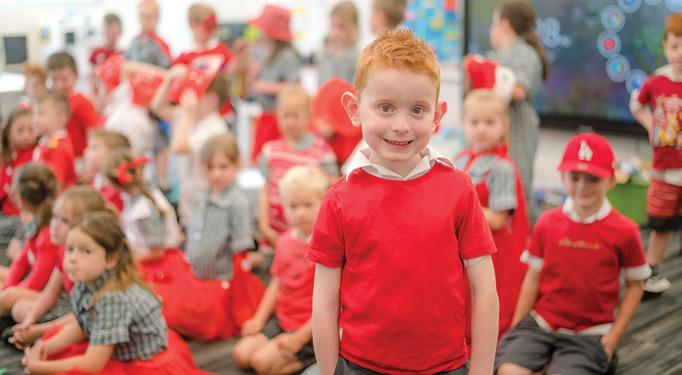
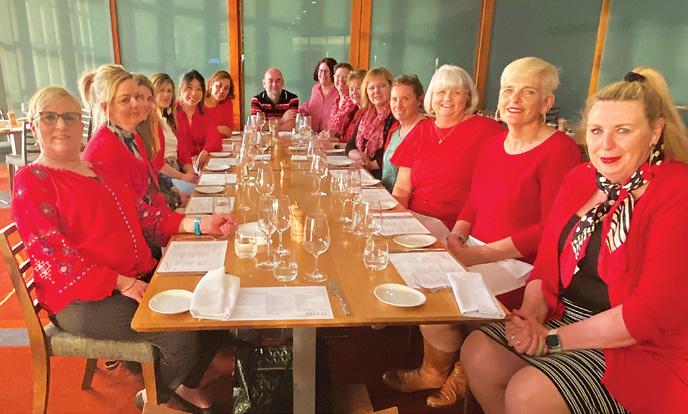
6 National Haemophilia 220, Dec ember 2022
Australian Haemophilia Nurses’ Group wearing red
Lincoln and his class in red
HFV Walk – HFA Executive Director, Sharon Caris and HFV President, Leonie Demos
Weipa Hospital
Weipa Town Authority Disaster Expo Stall
Maddy dressed all in red to help raise awareness for her two brothers with haemophilia A
Leapstart Early Learning Childcare, Jandakot WA
COLOURING IN COMPETITION
Thank you to all the children who participated in this year’s What is your superpower? colouring in competition. The winners are:

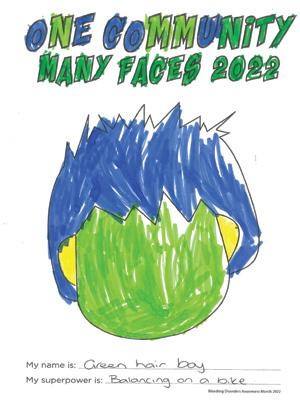
Category 1 children aged under 4 years Harper NSW
Category 2 children aged 5 to 8 years Payton QLD
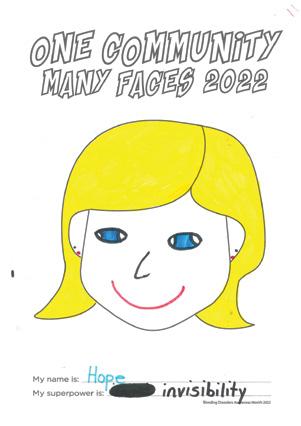
Category 3 children aged 9 to 11 years Hope ACT
HFA VIDEO CHALLENGE
Congratulations to Leela who won the HFA Video Challenge with her great video explaining What is a Bleeding Disorder.
You can view this creative video on the HFA YouTube Channelhttps://tinyurl.com/HFA-VC-Leela
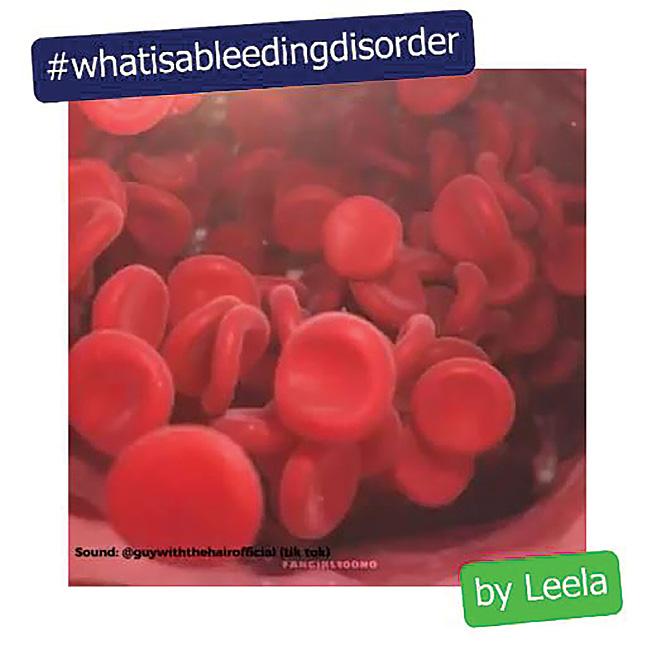
7 National Haemophilia 220, Dec ember 2022
Haemophilia treatment has changed over the years. The story of ‘Poppa’ Erl, grandfather, and grandson Roman, shows just how much. Erl was born in an era where little or no treatment was available and Roman, now 10, has had treatment since he was born. But even for Roman it has been a rocky road. As a small child he developed inhibitors to treatment, which meant his treatment was no longer as effective – and he started to have regular bleeding episodes just like his grandfather. Then new haemophilia treatments for inhibitors became available and his life has changed.

Naomi, daughter of Erl and mum to Roman, talked to HFA about their family history and the ups and downs of their journey.
Poppa Erl and Roman share a special bond
‘As a child we had a lovely life growing up. I always really admired my Dad’s strength. It was really tough though seeing Dad go through a bleed.’ Erl described his life growing up.
‘We come from a different era. A lot of us have experienced similar things, like haemophilia without treatment, so we do have a broader understanding of what haemophilia is all about and how important it is to look after yourself as much as possible - because haemophilia certainly comes back and bites you, if you’ve grown up when there’s no treatment around.’
When Erl was born there were no transfusions available for haemophilia. By the time Erl was growing up whole blood and fresh frozen plasma became available for treatment, which helped people to survive bleeding episodes but did not stop the swelling and the pain.
‘So with a knee bleed, you would have a knee that was the size of a football, as hard as a rock and unbelievably sensitive and painful. I put up with the pain as long as I could day and night at home, and then ended up being
taken to hospital and would get some morphine for the pain. But you couldn’t move your leg; you would be out of action for months. It would take many, many weeks before the swelling went down and before the movement returned.
‘It was nothing to be in hospital for three months or six months at a time, waiting for this to settle down and trying to get back on your feet and get your muscle strength back. It would be six months from the beginning of a bleed in the knee before you could take weight or even begin to start walking again.’ 1
The gene alteration causing haemophilia is always passed on from a father with haemophilia to his daughters and for Naomi and Erl this created a close relationship.
‘I knew that I was a carrier from a very young age; I guess it’s just always been a part of who I am and haemophilia has just always been there. I certainly always felt a special connection with Dad because of it; I knew it was a rare condition and that made it kind of special in a sense.’
8 National Haemophilia 220, Dec ember 2022
>>
‘My partner David always knew I was carrier and my Dad did have the “talk” with him before we got engaged to make sure that he understood what it meant to have a possible future with haemophilia; of course talking is fine but living through it with your own child is completely different.’
When Naomi and David decided to start a family, they found out the sex of the baby before birth to prepare the birth plan and knew that they were having a little boy.
Roman was diagnosed with severe haemophilia just after being born. Even though she knew it was a possibility, Naomi still found it difficult to come to terms with the diagnosis. New parents can always be anxious about their baby, but for Naomi, it meant she would have extra worries about Roman’s haemophilia. How would she know if he was having a bleed? Would he be OK? As Roman became mobile they would constantly hover over him trying to prevent accidents that could potentially turn into a bleeding episode.
Visits to the hospital to treat bleeds were also upsetting for Naomi, especially when she had to watch her little
baby having a needle in his vein to infuse the factor –trying to stay brave for Roman, but inside feeling very emotional.
Then when Roman was 2 years old, he developed inhibitors, which are antibodies to treatment so that it doesn’t work as well. He had a port-a-cath device surgically inserted into his chest so he could have regular prophylaxis treatment, which was every single day.
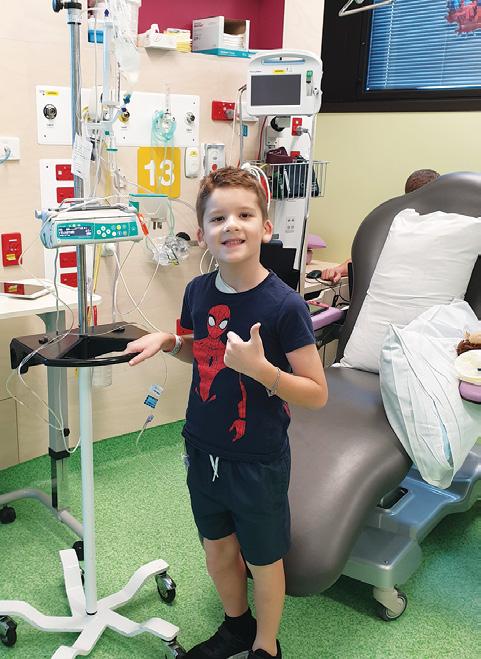
‘So often Roman would get spontaneous bleeds, and he would just wake up in pain. It just became our new normal to drop everything, go to the hospital and spend the next week or so dealing with a bleed.’
‘But life does eventually get easier’, explained Naomi. ‘Once they get older, when they are sure on their feet, they can tell you when they are having a bleed. They can verbalise what they are feeling in their body or tell you what happened exactly when they got hurt.’
Ironically, Roman did miss out on plenty of experiences just like his grandfather did when he was a child.
‘When he started school, he spent some time in a wheelchair recovering from bleeds. This was an emotional challenge for Roman - he didn’t want to be different to the other kids and worried the other kids would see his port-a-cath through his school shirt.
‘He often missed out on friends or family gatherings because of bleeds and was unable to join in with his friends if their birthday parties had trampolines or a jumping castle because they were a risk for him getting a bleed. We even spent a couple of Christmas Eves in hospital and Christmas Days with a bleed. We never went on a holiday because we were worried about being too far from the hospital, him getting an infection in the port-a-cath, getting a bleed, or even just how we would manage to pack all the gear that we need to do his daily treatment.
‘And then this incredible opportunity came about. There was a new treatment that raises the factor 8 levels 24/7, prevents bleeds even for those with inhibitors AND was to be given subcutaneously [under the skin] every fortnight! We had only dreamed about such a product, but now it is a reality. Roman now just has one small needle every fortnight. The whole process takes 10 minutes.
9 National Haemophilia 220, Dec ember 2022
>>
Roman in hospital
Roman recovering from a bleed
‘Roman is now 10 years old. The last few months Roman has started to play sports. He enjoys table tennis and Little Athletics. We still can’t believe how much he can do now and not get a bleed. It is pretty amazing and it is certainly life changing for him. It has really boosted his confidence. He can now participate in the sports and activities that his friends do.’
Erl’s experiences over his lifetime meant he has had a lot to offer Roman, Naomi and David. Living through a childhood with treatment shortages, he knew what having an inhibitor would mean for Roman.
‘Dad is really the only person who truly understands what we are all going through and I think that mutual understanding has helped us both over the years.’
Erl also has a lot to teach Roman about coping with haemophilia and getting the best out of life.
‘My Dad is doing ok - he has plenty of issues to deal with but he keeps on going. He is pretty incredible. He gets out and about a lot. He loves to go for coffee and cake and is always somewhere enjoying events, wildlife and sunshine.
‘Roman and Dad share their experiences with photos when they have a bleed, and Dad sends a photo to Roman to show what it looks like when he is at the
hospital having treatment. When Roman was younger, he built a “walking stick just like Poppa’s” with clip together blocks. There is a special bond between Poppa and Roman.’

Erl and Roman have lived different childhoods and have different stories to tell about their experience living with haemophilia but now they are both on the same new treatment and they both get to enjoy life with less bleeds.
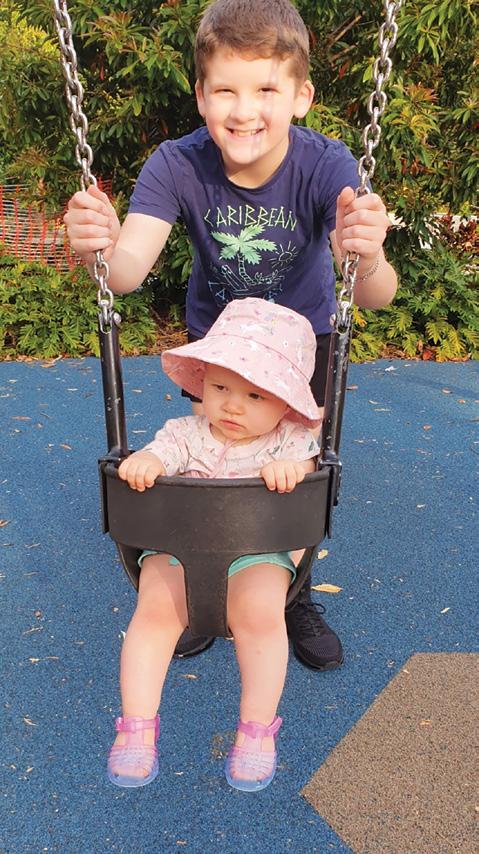
REFERENCES
1. Quote originally published in National Haemophilia 2011 June; 174: 26-27.
10 National Haemophilia 220, Dec ember 2022
<<
Roman playing with his sister at the park today
VWD down the generations

Fiona is in her early 50s and found out she had von Willebrand disease (VWD) when she was 6 years old. She comes from a family with a long history of VWD.
My dad’s mother had 9 children, 8 of whom had VWD, including my dad, so it was talked about quite regularly in our household.
GROWING UP
I grew up living normally. I played sport and my friends didn’t know - and to think of it, I don’t think the school ever knew. It was normal in our household to have nosebleeds, bruises, cuts, grazes. The only thing different was we had bandages on our bodies not Band-Aids®, we had ice packs on our joints or bruises and nosebleeds that bled for hours, not minutes.
If you asked the question, what was it like as a teenager as a girl with VWD in those days, I would’ve said it was a nightmare. No information, periods were a nightmare, but you thought they were normal, heavy bleeding with large clots and no one to ask. My mother didn’t understand as she didn’t have VWD and my sister was older than me and had moved out by the time I started my periods. It was a learn to cope type of thing. It is totally different now and so much information is available.
MANAGING TREATMENT
I don’t have regular treatment, only on demand when I have a bleed. Being from a regional area, it took me two years to organise factor storage at the local hospital so that it is available when I need it.
Living with VWD can be a tiresome and arduous affair, especially when you see new doctors, dentists or any other medical professionals. You have to make sure you explain that you have VWD and make sure the medication they are giving you won’t cause a bleed or extensive bruising. My Haemophilia Treatment Centre has helped me with this. For example, recently with one phone call from me about an upcoming dental procedure, they contacted my dentist and gave them the information required. I am so grateful to my HTC team for making it so easy to deal with.
My one bit of advice is to speak up: advocate for yourself and your children. Heavy periods are not normal, find out why. A lot has changed in the last 50 years. There is so much information around - you just need to ask.
11 National Haemophilia 220, Dec ember 2022
Fiona with her son and newborn grandson

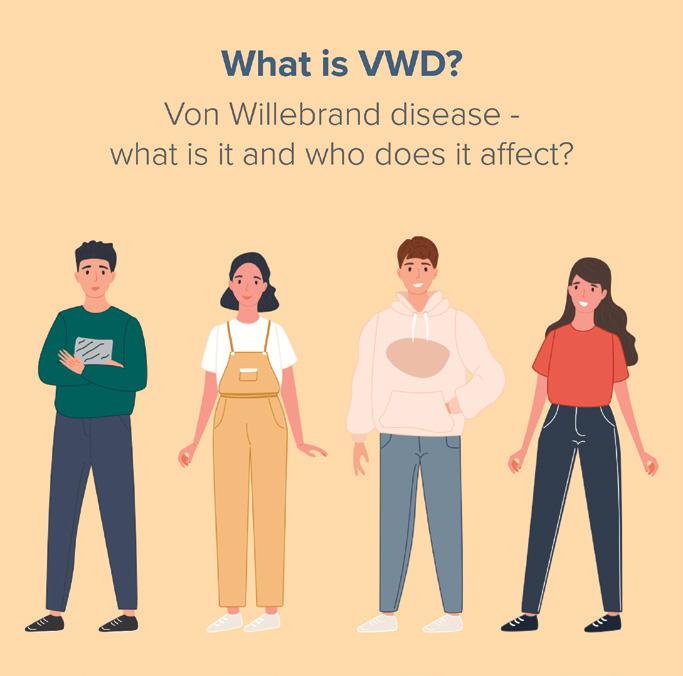

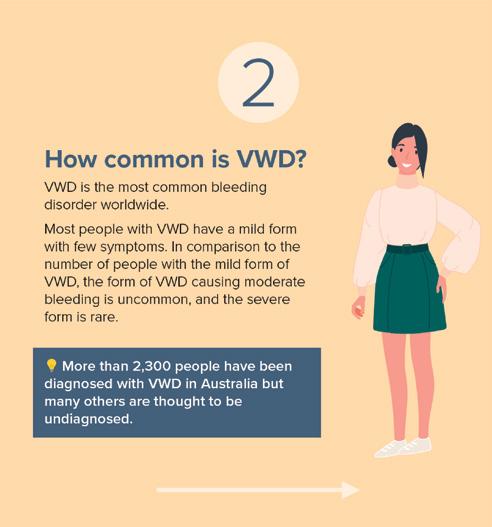
12 National Haemophilia 220, Dec ember 2022

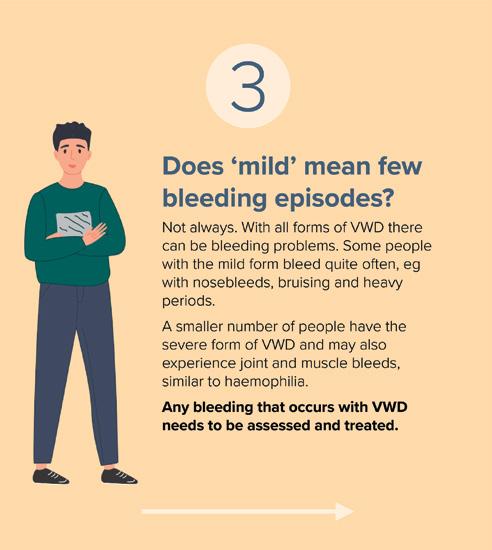

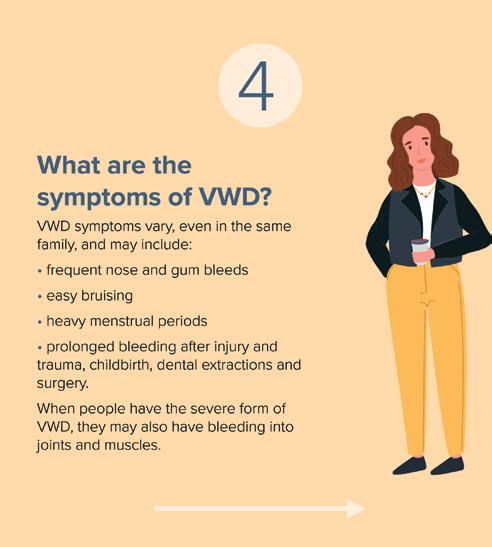
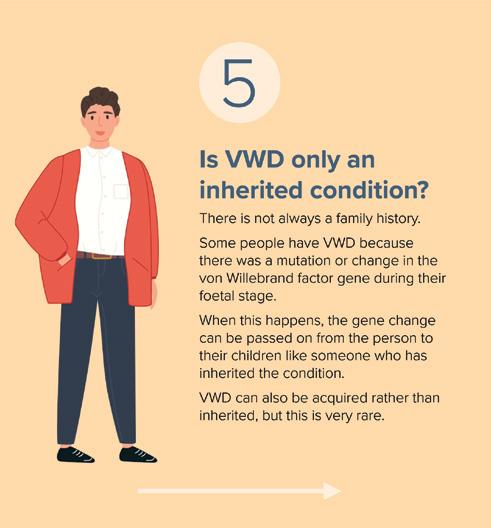
13 National Haemophilia 220, Dec ember 2022
New haemophilia therapies
It is an exciting time with more new haemophilia treatments likely to become available in Australia, but there have been a lot of questions about them and what they will mean for treatment and care. How do they work? What difference will they make for people with haemophilia? How will they impact on comprehensive care?
In the New therapies webinar for Bleeding Disorders Awareness Month, Dr Liane Khoo and Dr Sally Campbell gave simple and clear presentations explaining the new extended half-life (EHL), non-factor therapies and gene therapies for haemophilia and were joined by haemophilia nurse Stephen Matthews for a Q&A to answer audience questions.
New therapies
HFA Zoom and Facebook Live webinar, 13 October 2022
Facilitator ~ Natashia Coco, Haemophilia Foundation Australia
Speakers
~ Dr Liane Khoo, haematologist & Director, Haemophilia Treatment Centre, Royal Prince Alfred Hospital, Sydney
~ Dr Sally Campbell, haematologist & Acting Director, Queensland Haemophilia Centre, Royal Brisbane & Women’s Hospital
~ Stephen Matthews, Clinical Nurse Consultant, Haemophilia Treatment Centre, Royal Prince Alfred Hospital, Sydney
~ Sharon Caris, HFA Executive Director
Watch the webinar onlinehttps://tinyurl.com/HFA-new-therapies-webinar
NEWER HAEMOPHILIA THERAPIES
Understanding the way haemophilia treatments work can be challenging and Dr Liane Khoo’s presentation on newer haemophilia therapies was a very user-friendly explanation of the sophisticated technologies involved.
She explained that the definition of prophylaxis has changed in recent years. It now covers ‘the administration of agents’ – it is no longer limited to infusing clotting factors into a vein but can be a range of therapies given in a variety of ways. The goal of prophyaxis is also more ambitious – aiming to prevent bleeding, allowing people with haemophilia ‘to lead active lives and achieve comparable quality of life’ to people who do not have haemophilia.
Extended half-life factors (EHLs)
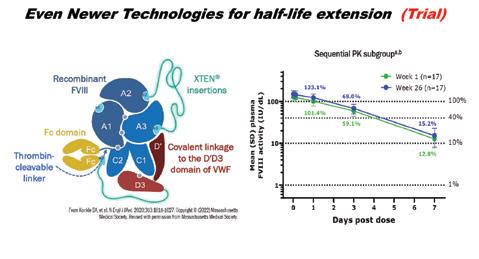
Adding the sugar molecule PEG (polyethelene glycol) to haemophilia replacement factor therapies has meant that their half-life can be extended, ie, how long it takes the active substance in factor to reduce by half in the body. As a result, the factor lasts longer in the body and fewer injections are needed.
Other ways of making the factor last longer in the body have been by attaching other types of molecules to it, such as fusion proteins. There are now also clinical trials of even newer technologies to extend the half-life of factor, with good results.
14 National Haemophilia 220,
Dec ember 2022
Non-factor replacement therapies
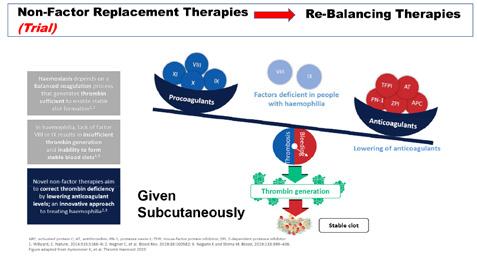
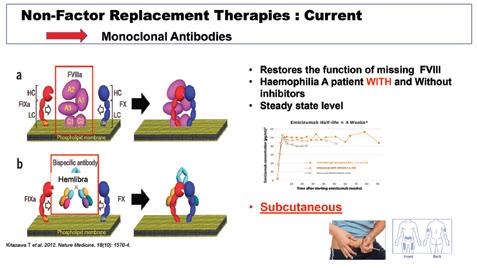
Liane Khoo explained that monoclonal antibodies like Hemlibra® (emicizumab) do the same job as factor VIII (8) by helping the body to form a clot. However, these treatments work a bit differently to replacement factor therapy:
• They can be injected under the skin.
• They can be given to patients with and without inhibitors.
• They maintain a constant steady level in the body.
New comprehensive care

What do these new therapies mean for comprehensive care? She looked at the situation when the patient and their family is at the centre of care and the multiple services that would need to be available across Australia, no matter where you live, to achieve the goals of care.
She also touched on rebalancing therapies that are currently in clinical trial. These therapies are different again. They work by lowering anticoagulants to balance the deficiencies in clotting factors VIII (8) or IX (9) that cause haemophilia.
GENE THERAPY
Dr Sally Campbell introduced her presentation with a list of the haemophilia treatments currently available in Australia and commented that with individualized treatment, each person with haemophilia would need a treatment that is right for them – and that what is right for one person may not be for another.
She focused on gene therapy for haemophilia. Viral vector-mediated gene transfer is now in advanced clinical trials, but three other approaches to gene therapy are also being explored: stem cell-based gene therapy, in-situ mutation repair and non-viral gene transfer (see the slide below). She explained briefly how the different types of gene therapy work and, in particular, the viral vector-mediated gene transfer method in haemophilia.
Gene Therapy
Hemophilia gene therapy
15 National Haemophilia 220, Dec ember 2022
Viral Vector-mediated Gene transfer Retrovirus adenovirus ardeno-associated virus Stem cell-based gene therapy embryonic stem cells adult stem cells In-situ mutation repair chimeric oligonucleotides trans-splicing zinc finger nucleases Non-viral gene transfer hydrodynamic delivery oral chitsosan nanoparticles targeted nanoparticles
>>
She explained that the medicines review processes have just commenced for haemophilia gene therapies in Australia and that they will take some time before gene therapies are available to patients. Patient considerations for gene therapy will include:
• Eligibility – what are the criteria for who can have gene therapy
• Durability – how long the effect of the treatment will last
• Factor level – what factor level will result
• Genotoxicity – could it cause an adverse event, eg cancer.
It will be important to discuss these questions with your Haemophilia Treatment Centre team, but liver health will be a key issue, as all of the current AAV gene therapies target the liver. She pointed out that what would be classified as a ‘success’ with gene therapy would be very individual and depend on what you wanted to achieve with the treatment.
What are the timeframes for access to gene therapy in Australia?
• Gene therapy needs to go through several government assessment processes to see if it can meet the requirements to be a governmentfunded treatment in Australia
• There also needs to be discussion about how it would be funded in Australia
• This may take a considerable time
• There would need to be some advocacy from HFA as part of this process.
What can I do to prepare myself for gene therapy?
Q & A
What would gene therapy for haemophilia involve for a patient?
• Think of gene therapy as just another treatment. It may change you from severe haemophilia to mild haemophilia, but you can still pass haemophilia onto your children.
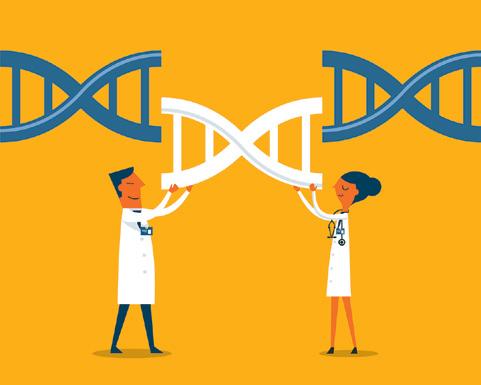
• Currently only adults can access the therapy
• You need to make some significant commitments, for example:
• at least 6 months of weekly visits to your HTC for monitoring
• a year of abstaining from alcohol.
If I have had hep C and been cured, can I have gene therapy?
• Yes, if your liver is showing signs that it is functioning normally.
• Work towards a healthy liver, with a moderated alcohol intake, weight management, being as active as you are able to be and avoiding medications that are toxic to the liver, where possible.
• Take care of your mental health, as you may need steroids with gene therapy and these can affect your mood.
Discussion also highlighted that people can consider new therapies and see some benefits even if they are older and have damaged joints.
This was a lively and informative webinar – many thanks to the speakers for putting it together.
Find out more
• Watch the webinar at https://tinyurl.com/HFA-new-therapies-webinar
• Read the HFA gene therapy informationhttps://tinyurl.com/HFA-gene-therapy
16 National Haemophilia 220, Dec ember 2022
Stephen Matthews and Sharon Caris joined Liane Khoo and Sally Campbell to answer questions from the audience.
<<
World AIDS Day is marked globally on 1 December. In 2022 the national theme for World AIDS Day is Boldly Positive
World AIDS Day aims to encourage Australians:
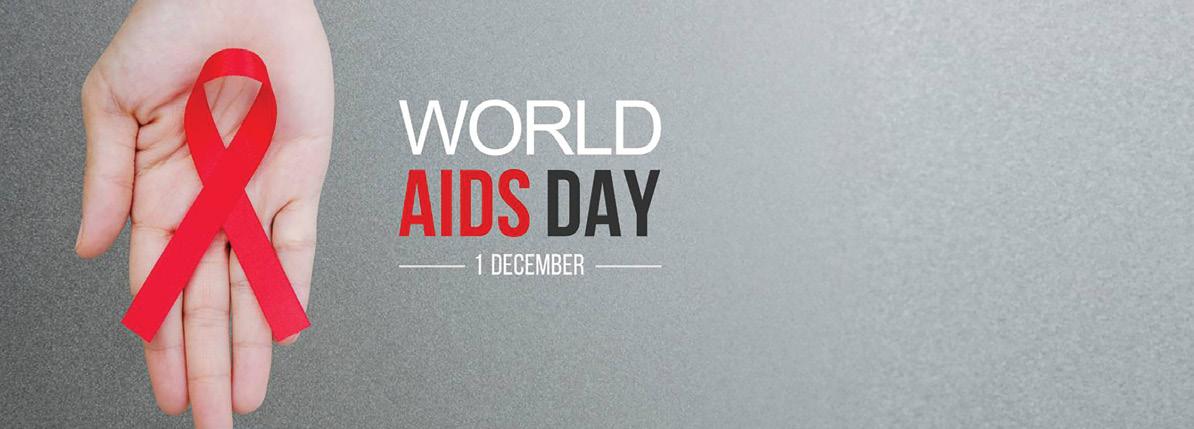
• to educate themselves and others about HIV
• to take action to reduce the transmission of HIV by promoting prevention strategies
• and to ensure that people living with HIV can participate fully in the life of the community, free from stigma and discrimination.
On World AIDS Day you can show your support for people with HIV by wearing a red ribbon, the international symbol of HIV awareness and support.
HIV IN THE BLEEDING DISORDERS COMMUNITY
This is a time when we are mindful of our community members living with HIV, of demonstrating our support for them and commemorating those with HIV who have passed away. However, we need to ensure that this awareness remains part of our everyday life as a community.
HIV is an important part of our community’s history. In the mid-1980s some people with bleeding disorders acquired HIV from their clotting factor treatment products. Treatment product safety is now greatly improved and the risk of bloodborne infection from products derived from blood is extremely low. Nevertheless, the impact of HIV has been profound. It affected not only the people who acquired HIV, but also their partner, family and friends, the health professionals who have cared for them, and the bleeding disorders community generally.
The HIV experience drew on the resilience that was already a strong element among people with bleeding disorders and led to a resolve to respond as a community, taking on effective advocacy around safer treatments and providing support.
Living with a bleeding disorder can have its challenges and peer support is valued by many. Our bleeding disorders community is diverse but comes together with an aim of valuing everyone for their mutual support, inspiring stories, and shared lived experience.
There has been an ongoing conversation about support for community members with HIV and those who have loved them and cared for them: what would they like to see in peer support?
They have said that acknowledging and hearing their experiences is immensely important. Creating an environment where our members with HIV can thrive also involves recognising and respecting individual preferences. Every person or family affected by HIV has their own story or way of dealing with it. Some have spoken openly about having HIV or their experiences while others are very private; some prefer not to dwell on the past; others find it very difficult to think about the future. It can be important for some to commemorate those they have lost.
Our Foundations are committed to making sure their community activities provide a supportive and inclusive environment, which takes all of this into account.
Read more
Read 40 years of HIV – where to next? for reflections from our affected community about their experiences and thoughts about the futurehttps://tinyurl.com/HFA-40-years-HIV
World AIDS Day and local eventswww.worldaidsday.org.au
17 National Haemophilia 220, Dec ember 2022
AHCDO update
Andrea Johannessen
GENE THERAPY ROADMAP
The Australian Haemophilia Centre Directors’ Organisation (AHCDO) has developed the Gene Therapy Roadmap to provide a Clinical Implementation Plan that sets out AHCDO’s position on the preferred approach to implementation of gene therapy for haemophilia in Australia, with a focus on patient needs that is informed by clinical experience.
The Roadmap can be viewed from the AHCDO websitewww.ahcdo.org.au
EDUCATION DAY
AHCDO held a full-day Education Day for Director and Associate Members in October 2022.
We were very enthusiastic about having the event in person after two years with virtual events, which was reflected by the very high attendance in person this year. The clinicians who were not able to attend on the day have access to the presentations using their member portal.
A challenging opening session focussed on ethical considerations in the care of haemophilia patients facilitated by clinical ethics expert Prof Lynn Gillam. Attendees discussed how values and judgement influence decision-making processes in different cases and while we were not able to solve the dilemmas with a single outcome, the session gave our members the opportunity to reflect on the elements of the process.
The morning sessions were focussed on Bleeding Disorders of Unknown Cause (BDUC) and we were very fortunate to have Prof James O’Donnell from Irish Centre for Vascular Biology to present his research program and facilitate an engaging discussion on recent insights and clinical issues related to low von Willebrand factor
In the afternoon, the 2021 and current AHCDO Research Fellows presented an update on their projects utilising Australia Bleeding Disorders Registry (ABDR) data. Carly George gave an update on firstly, the use of Extended Half Life (EHLs) treatment products and secondly on the Haemophilia Joint Health Score assessment tool. Both of these projects will be submitted for publication over the next couple of months. Radha Ramanan presented single site interim results on two projects which are currently being prepared for multi-site authorisation. AHCDO’s ABDR Senior Research Fellow, Sumit Parikh, gave an update on the ABDR research projects and discussed future projects and development of additional tools to facilitate AHCDO research.
Sally Campbell presented an engaging discussion on haemophilia and participation in sport. Dr Campbell’s initial research carried out in one state demonstrates that there are many benefits for participation in sport and supported further research to determine the safety profile of sport for patients with haemophilia.
We finished the day with a presentation from Stephanie P’ng, chair of AHCDO Research Committee, and the development of a research plan to investigate longitudinal (long-term) outcomes of emicizumab treatment.
18 National Haemophilia 220, Dec ember 2022
AHCDO EXECUTIVE OFFICER
Dr Megan Sarson has been the Executive Officer with AHCDO since 2002 and has made significant contributions to the development of the organisation over the years. Megan has decided to finish her role at AHCDO, although she will continue her role with the Thrombosis and Haemostasis Society of Australia New Zealand (THANZ).

Dr Andrea Johannessen (BSc (Hons), PhD) was recruited to cover Megan’s recent 6-month long service leave and following Megan’s resignation has been offered and accepted the role on an ongoing basis.
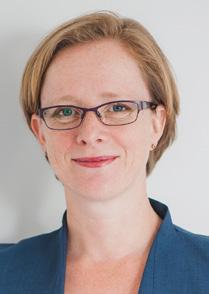
Andrea has a background in medical research followed by 20 years in senior management in health care, academic and not-for-profit organisations, with a particular focus on research governance. Andrea is very pleased to be able to continue in the role and work with AHCDO members to facilitate clinical care and research and continue the collaborative work with HFA that Megan started.
Starting school with a bleeding disorder
Janine Furmedge and Jaime Chase
Starting childcare, kindergarten or school – or high school - can be both an exciting and daunting transition for children and their families.
When a child has a rare bleeding disorder such as haemophilia, there is additional anxiety for both parents/guardians and educators. Parents may worry about entrusting the care of their child to others. Most educators will not have experience with bleeding disorders and are often worried about what this might mean for the inevitable falls and scrapes in the playground and be unsure about including children in activities and sports.
HOW TO EDUCATE SCHOOLS?
Providing information for schools and childcare is a key role of the Haemophilia Treatment Centre (HTC) with the goal to support parents, allay the fears of educators and for children to have a safe, active and full school life.
Depending on the size of the school, key contacts may include teachers, first aid officers and a school nurse.
Some of the key messages provided to schools include:
• Most students with haemophilia can lead healthy and active lives and participate fully in the school community
• Appropriate activities and sports are encouraged to promote physical and mental health
• A student with haemophilia will NOT bleed profusely from a simple fall in the playground or a minor cut or injury
• Standard first aid is the same as for any other student
• A knock to the head or major injury requires prompt medical attention which may require factor replacement
• In the instance of an injury, contact the parent or guardian immediately.
19 National Haemophilia 220,
2022
Dec ember
Dr Andrea Johannessen is AHCDO Executive Officer
Dr Megan Sarson
>>
Dr Andrea Johannessen
Most childcare centres and schools will request a medical ‘action plan’ for children with a medical condition. Your HTC can provide an action plan with key information about your child’s bleeding disorder, how to recognise a bleed, appropriate first aid and when to call the parent/guardian or an ambulance in the rare case of a significant injury (emergency management).
STARTING HIGH SCHOOL
Starting high school is such an exciting time for young people and their families - but it may be filled with a bit of apprehension too! The school is likely to feel and be a lot bigger than their primary school and it can be easy to feel a bit lost and nervous when they begin.
Orientation days are a fantastic way to feel more comfortable in the environment. Another way to ease transition is for parents and guardians to chat openly and honestly about what high school might look like and what ways you can troubleshoot any issues.
Tips and tricks for high school
• Tell your HTC your young person is transitioning to high school. The sooner they know, the more time they have to help with transition.
• Find your contact! Help your young person connect and feel comfortable with their year advisor, First
LOCAL SCHOOL RESOURCES
Each state and territory has its own way of managing health conditions in schools.
Speak to your local Haemophilia Treatment Centre or your local Foundation about resources and education for schools on haemophilia that is suitable for your child. They may have a school pack that they will tailor for your child. Some may be able to work with you to provide an education session for the teachers and/or students in the school, or to develop an individualised plan in collaboration with you and the school. They may also offer other types of education, such as an annual seminar for teachers.
This is an example of an HTC information page for teachers. There are short videos of children with haemophilia answering common questions from teachers - https://tinyurl.com/RCH-HTC-teacher
Aid Officers and/ or Wellbeing Officer. This is the staff member who will be your and your young person’s contact for school issues, further support and firsthand knowledge of bleeding disorders.
• Some young people may need access to the bathroom during school time due to heavy periods. Discuss this with the school and check if your HTC may need to provide support or advice.
• Make sure your young person keeps sanitary items readily available for school in case of flooding. A key contact at school is very useful for this issue.
• Make sure your Emergency plan is up to date and completed by your HTC as required.
• Your HTC will offer school education sessions, either pre-recorded, virtually or in person.
• Plan ahead - work with the school and your young person regarding camps, excursions and sporting events so everyone is prepared.
• Talk to your young person about wearing a MedicAlert® ID bracelet or necklace or something similar. Make sure the emergency screen on their mobile says they have a bleeding disorder and that they carry their ABDR patient card in their wallet or have a photo of their ABDR card on their phone.
For information on sport and exercise for young people with haemophilia, visit the online video set and toolkit On the move with haemophilia. This is aimed at parents, teachers and coaches, and is available on the HFA website - https://tinyurl.com/HFA-OTMWH.
What did the schools say?
Typical feedback from educators after a haemophilia information session:
‘I was really nervous about having a child with haemophilia in my class. Today has put me at ease.’
‘I feel better prepared to look after and enjoy the company of the child in my care.’
‘Key message that I learnt today: that a child with haemophilia will not bleed to death if they fall over in the playground. There is no need to panic if the child is hurt.’
20 National Haemophilia 220, Dec ember 2022
<<
ENCOURAGING INDEPENDENCE
High school is a time where young people start to move away from their parents and caregivers and start to exert independence. Sometimes this is a difficult time for the parents/caregivers, especially in the context of a bleeding disorder. While some young people crave freedom and independence, others may need that extra push to become confident and self-motivated. Wherever your young person sits on this spectrum, there are ways everyone can help young people thrive. Skills you can help your young person practice are:
• Being independent at home - learning to cook, being responsible for cleaning areas of the home, doing their own laundry
• Managing their time - becoming responsible for their own work and study and learning how to create, maintain and stick to a timetable is very helpful for high school life
• Increasing confidence - learning to deal with new situations, meeting new people
• Being responsible - looking out for their friends and themselves
• Taking responsibility for their bleeding disordermaking their own appointments, attending part or all of their clinic appointments by themselves
• Having a sound knowledge of their bleeding disorder and what this means to them
• Being responsible for their own treatment, as applicable.
Janine Furmedge is Haemophilia Clinical Nurse Consultant, Henry Ekert Haemophilia Treatment Centre, Royal Children’s Hospital, Melbourne VIC
Other ways to encourage independence are to create clear boundaries which may evolve as your young person gets older. These include:
• Going out with friends - where are they going and how late can they be. They need a person in their group who knows about their bleeding disorder. Discuss who it will be and how they will help in case of an incident/accident
• Contacting when they are out - when and how they should check in
• Using social media devices - what platforms are okay and any device-free times.
IT IS OKAY TO LET GO!
As a parent or guardian you want your young person to grow into a confident, capable, knowledgeable adult. Your HTC wants this too! When you begin to progressively let go and allow your young person to become more independent with life with a bleeding disorder, you learn to trust them and they learn to trust themselves.
High school will be a bit of trial and error on both sides of you and your young person. With a bit of trial and error and help from your HTC, your young person will learn to trust themselves and the decisions they will make both about their lives and their bleeding disorder.
High school is an amazing time of growth for a young person. With the steady guidance of parents, caregivers with the support of the HTC, they can learn, grow and go on to great things.
Jaime Chase is Haematology Clinical Nurse Specialist, Children’s Cancer & Haematology Service, Haemophilia Treatment Centre, John Hunter Children’s Hospital, Newcastle NSW
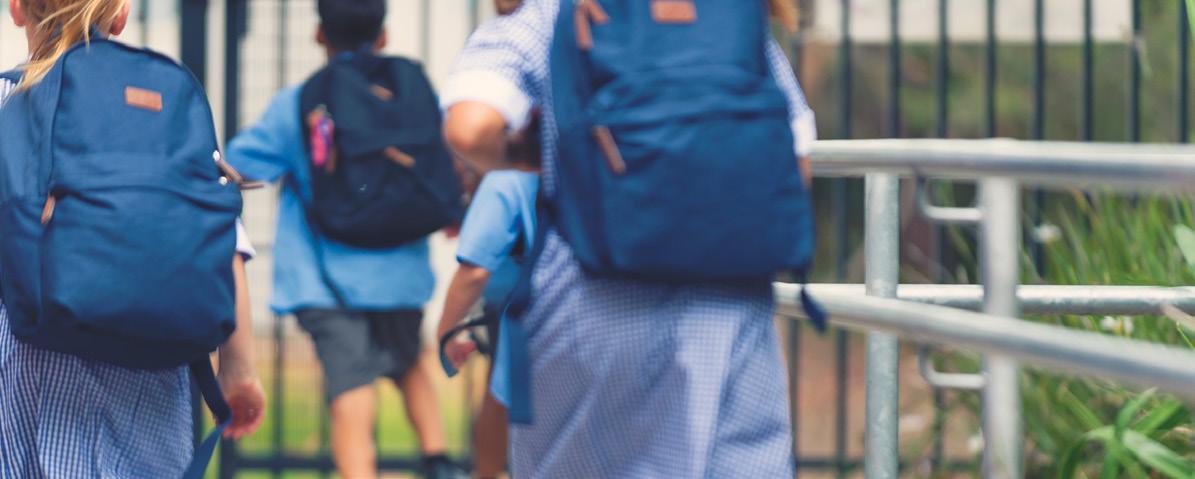
21 National Haemophilia 220, Dec ember 2022
Haemophilia – the spice of life

A.
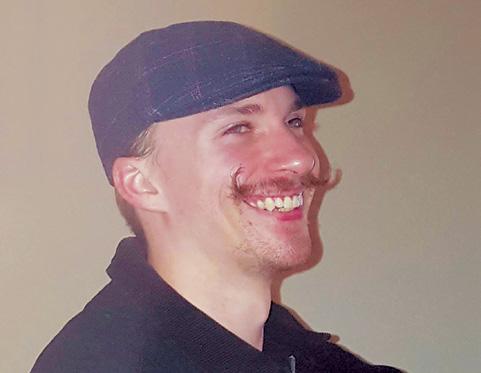
What else are you up to?
Tell us about you and your bleeding disorder
At the moment I’m working in headphones diagnostics and repairs. I test headphones with software for any issues or errors, clean them up and send them back to return to the customer. It’s great – my own office and chair!
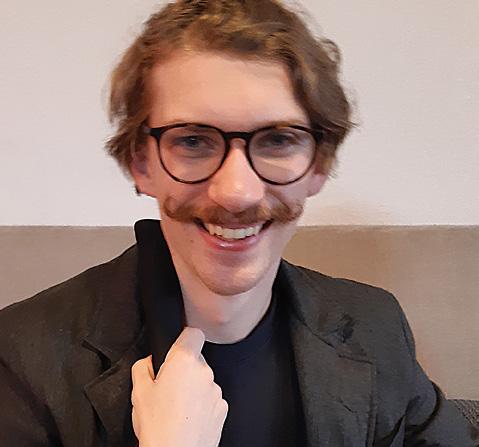
Over the years I have had a few different treatments. Currently I’m on emicizumab (Hemlibra ®), which is more time-efficient for me. I only have to infuse once a week, rather than every second day with my previous treatment, and it’s very useful to be able to wake up and get my infusion done in 5 minutes. I have very early shift starts at work and have to be in town by 7.30am, so to be able to do my treatment so quickly and get straight into town is amazing.
My new treatment is more consistent for me too. I have had no bleeds at all – no sensations of a bleed, no bruising that takes a while to go away. I think others have had some issues, but I haven’t. With my earlier treatment, it would depend on the timing of the treatment and whether I was being physical and I would still have some spontaneous bleeds. But now I can go through the week confidently like anybody else and not think should I do this because of the worry about injuries or bleeds.
I really enjoy going to the gym and catching up with my mates there. These days I can go to the gym and be full on without having to worry about after-effects with bleeds. I love gym, but with my previous treatment, it used to be quite daunting for me. With any stress or pushing myself too hard, it always used to end up with a bleed, but now if I push myself, it’s more about being careful of muscle strain.
22
My name’s Willem. I am 20 years old and I have severe haemophilia
Willem spoke to HFA about working, exercising and being out and about in these days with new treatments.
National Haemophilia 220, Dec ember 2022
I’ve been seeing more of the city lately and trying out some new things.
Willem’s story
I’ve been getting around and seeing more of the city lately and trying out some new things. I hang out with my friends at the pub or see what else there is to do, maybe see a movie. At one stage I had an interest in axe throwing. I used to catch up with people after work to do it now and then. It was great fun – just a bigger version of darts and makes you feel more Viking and Nordic!
to enjoy socializing and recreational activities?
With my current treatment, I just have to maintain my treatment as usual. When I was on my previous treatment, I learned to organise dates and times with my treatments, just to stay safe. If I had quite physical things like going into town or paintballing, I would aim to treat the same day or the day before. That meant I could get the maximum enjoyment out of the day instead of having repercussions pop up later.
It’s good to let your friends and family know about your situation and make sure they understand it. And when they have an idea for an activity, to talk to them about how to plan it so you get to participate and there is a care for your wellbeing, for example, in case of emergencies.
When I think about it, haemophilia has really had an impact on who I am and how I deal with life. In my case, it has made me a more calm and collected person. I don’t have an interest in violence and I don’t react by being rough or angry. I think because growing up with haemophilia there are limitations with the physical, it makes you less likely to become physical. It’s a good life lesson.
What would you like to do in the future?
I would really like to chase music. At the moment I am just working – making money and looking cool while I make money, hopefully! But music would be my next phase –a nice creative arts area that appeals to me. Not physically straining, something calm and collected like me.
I’m interested in all sorts of music. I’ve had a crack at classical, jazz, rock, blues, but I am definitely not a pop person. A little bit of Frank Sinatra, Robbie Williams, AC/DC – the spice of life.

My haemophilia hasn’t really impacted on my career choices. In some of my earlier jobs, like when I was dealing with scalpel blades, my bleeding disorder gave me a bit of a worry. And it would impact if I was thinking about work that was intensely physical.

Read more
Check out the personal stories from other young people with bleeding disorders on:
• Factored In, the HFA youth websitewww.factoredin.org.au
• The HFA YouTube channelhttps://tinyurl.com/HFAYouTube
Photos supplied by Willem and reproduced with permission. Stock images: Sebastian Stam and Donatello Trisolino for Pexels.
23
I would really like to chase music.
National Haemophilia 220, Dec ember 2022
What have you learned about managing haemophilia
CALENDAR
World AIDS Day 1 December 2022 www.worldaidsday.org.au World Haemophilia Day 17 April 2023 www.wfh.org/whd 21st Australian Conference on Haemophilia, VWD and Rare Bleeding Disorders Melbourne 24 -26 August 2023 www.haemophilia.org.au/conferences
Bleeding Disorders Awareness Month October 2023 www.haemophilia.org.au/BDAM
ACKNOWLEDGEMENTS
Haemophilia Foundation Australia (HFA) acknowledges funding grants received from the Australian Government.
We thank the individuals, philanthropic trusts and companies which have made donations to HFA, and the following companies for sponsorship of education programs, conferences or disease awareness programs run by the Foundation for the bleeding disorders community.
HFA acknowledges the grants and/or conference sponsorship from the following pharmaceutical companies: BIOMARIN | CSL BEHRING | NOVO NORDISK
SAVE THE DATE
NATIONAL HAEMOPHILIA is a publication of Haemophilia Foundation Australia. Every effort is taken to ensure accurate and relevant content, however opinions expressed in NATIONAL HAEMOPHILIA do not necessarily reflect those of the Foundation or the editor, nor is any information intended to take the place of advice from a qualified medical practitioner or health professional.
Haemophilia Foundation Australia does not endorse or assure the products, programs or services featured in NATIONAL HAEMOPHILIA and does not make specific recommendations for any products, programs or services.
We welcome reproduction of articles or quotations from NATIONAL HAEMOPHILIA on the understanding that acknowledgement is made of NATIONAL HAEMOPHILIA as the source.

PFIZER AUSTRALIA | ROCHE | SANOFI GENZYME TAKEDA























































